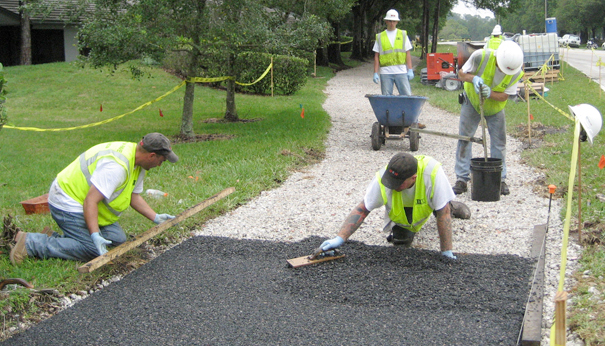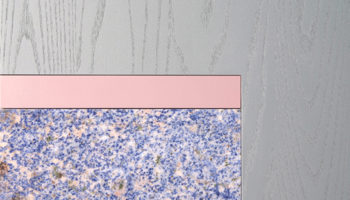Flexi-Pave: A Runner’s Dream
As a runner ( on good days) I imagine cities wherein sidewalks are neither concrete nor asphalt but a softer, joint-friendlier surface instead – terrain where running on city sidewalks doesn’t cause knee injuries and doesn’t allow me to make excuses for sitting on my derrière. Flexi-Pave, produced by Florida-based KBI, makes this a reality with the building material’s pour-in-place paving surface made of recycled tire rubber, aggregate rock and a binding agent. It is not intended to replace asphalt and concrete, but rather to refurbish and repair these existing surfaces.
Flexi-Pave. Manufactured by KBI.
Asphalt is a surface that traps heat. Concrete’s impervious nature promotes runoff. Both crack due to subsurface movement such as the growth of tree roots and freeze/thaw conditions. These existing materials are far from perfect, aside from my own complaints. Flexi-Pave introduces a new option which strives to address these issues. Its flexibility makes it resistant to subsurface conditions which generally crack concrete or asphalt surface. Additionally, it is slip resistant and absorbs impact (for my hypothetical running). “It’s installed two inches thick for new construction or one inch thick over an existing surface,” said Tony Ross of James Ross and Sons Contractors.

Flexi-Pave can be installed with a heating system called Warm Zone which is sensor-based; heating cables are placed over concrete with Flexi-Pave on top. According to Ross in an interview with the SUNY College of Environmental Science and Forestry, “When the temperature gets below freezing and it senses snow in the air it’ll automatically kick on.” This means the elimination of salt and shoveling since the heating cables will melt snow and ice. Approximately $6 per square foot installed, Flexi-Pave is ideal for sidewalks, parking lots and low-speed roads (less than 35mph).
A fine example of upcycling, the term coined by the popular book Cradle to Cradle, Flexi-Pave makes use of thousands of tires that would previously have ended up in landfills. For other examples of this sustainable practice, take a look at Uhuru and Scrap Lab.




Leave a Reply